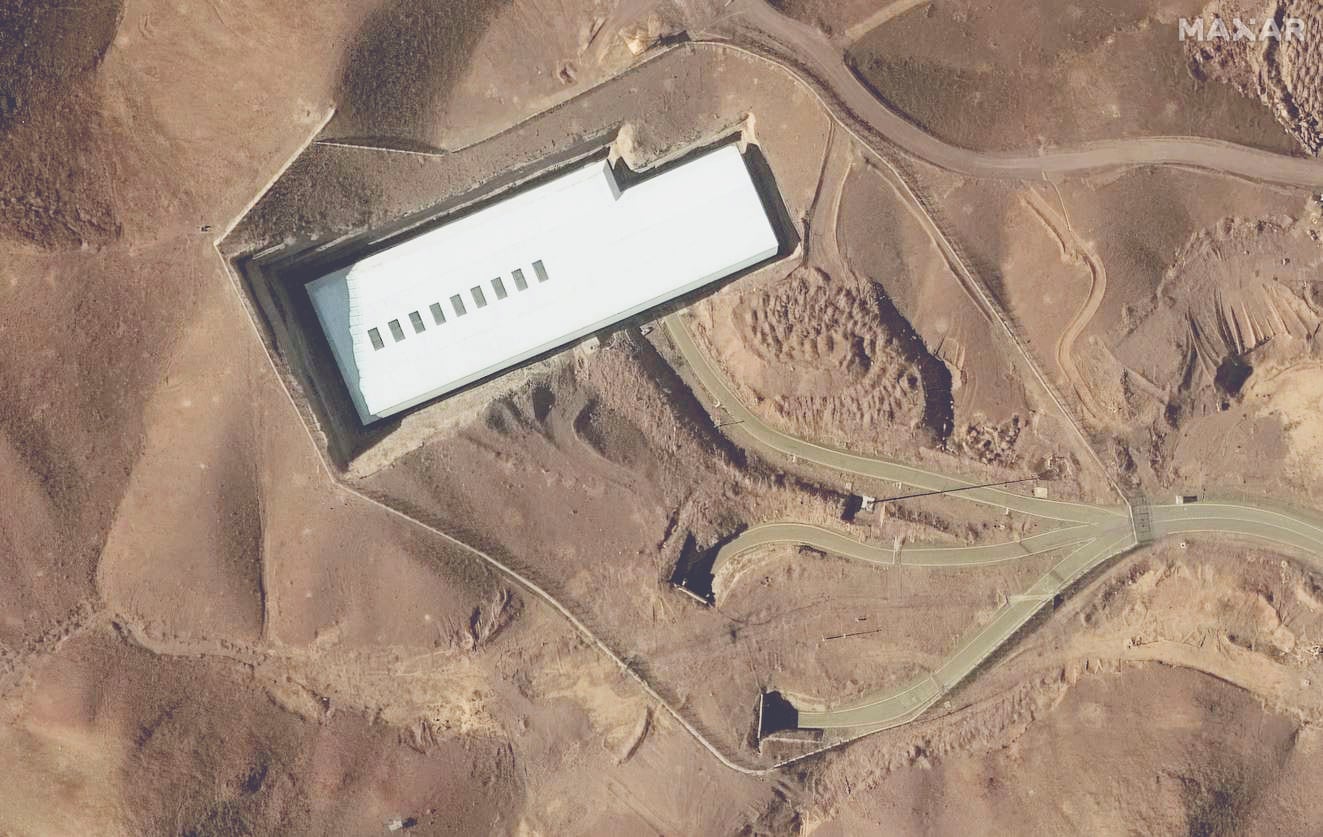
In inserting itself into Israel’s war against Iran, the U.S. unleashed its massive “bunker-buster” bombs on Iran’s Fordo fuel enrichment plant.
Those bombs were widely seen as the best chance of damaging or destroying Fordo, built deep into a mountain and untouched during Israel’s weeklong offensive.
A U.S. official, speaking on condition of anonymity to discuss the operation before an official briefing, confirmed their use in Sunday’s attack.
The U.S. is the only military capable of dropping the weapons, and the movement of B-2 stealth bombers toward Asia on Saturday had signaled possible activity by the U.S. Israeli leaders had made no secret of their hopes that President Donald Trump would join their week-old war against Iran, though they had also suggested they had backup plans for destroying the site.
It remained unclear early Sunday how much damage had been inflicted upon Fordo. The mission could have wide-ranging ramifications, including jeopardizing any chance of Iran engaging in Trump’s desired talks on its nuclear program and dragging the U.S. into another Mideast war.
Here’s a closer look.
What is the bunker-buster bomb?
“Bunker buster” is a broad term used to describe bombs that are designed to penetrate deep below the surface before exploding.
In this case, it refers to the latest GBU-57 A/B Massive Ordnance Penetrator bomb in the American arsenal. The roughly 30,000 pound precision-guided bomb is designed to attack deeply buried and hardened bunkers and tunnels, according to the U.S. Air Force.
It’s believed to be able to penetrate about 200 feet (61 meters) below the surface before exploding, and the bombs can be dropped one after another, effectively drilling deeper and deeper with each successive blast. It was not immediately known how many were used in the Sunday morning strike.
The bomb carries a conventional warhead, but the International Atomic Energy Agency has confirmed that Iran is producing highly enriched uranium at Fordo, raising the possibility that nuclear material could be released into the area if the GBU-57 A/B were used to hit the facility.
However, Israeli strikes at another Iranian nuclear site, Natanz, on a centrifuge site have caused contamination only at the site itself, not the surrounding area, the IAEA has said. U.S. warplanes also hit Natanz.
How tough a target is Fordo?
Fordo is Iran’s second nuclear enrichment facility after Natanz, its main facility, which already has been targeted by Israeli airstrikes. The IAEA says it believes those strikes have had “direct impacts” on the facility’s underground centrifuge halls.

Fordo is smaller than Natanz, and is built into the side of a mountain near the city of Qom, about 60 miles (95 kilometers) southwest of Tehran. Construction is believed to have started around 2006 and it became operational in 2009 — the same year Tehran publicly acknowledged its existence.
In addition to being an estimated 80 meters (260 feet) under rock and soil, the site is reportedly protected by Iranian and Russian surface-to-air missile systems. Those air defenses, however, likely have already been struck in the Israeli campaign, which claims to have knocked out most of Iran’s air defenses.
Still, Israeli Prime Minister Benjamin Netanyahu has said the goal of attacking Iran was to eliminate its missile and nuclear program, which he described as an existential threat to Israel, and officials have said Fordo was part of that plan.
“This entire operation ... really has to be completed with the elimination of Fordo,” Yechiel Leiter, Israel’s ambassador to the U.S., told Fox News.
About the B-2
In theory, the GBU-57 A/B could be dropped by any bomber capable of carrying the weight, but at the moment the U.S. has only configured and programed its B-2 Spirit stealth bomber to deliver the bomb, according to the Air Force.
The B-2 is only flown by the Air Force, and is produced by Northrop Grumman.
According to the manufacturer, the B-2 can carry a payload of 40,000 pounds (18,000 kilograms) but the U.S. Air Force has said it has successfully tested the B-2 loaded with two GBU-57 A/B bunker busters — a total weight of some 60,000 pounds (27,200 kilograms).
The strategic long-range heavy bomber has a range of about 7,000 miles (11,000 kilometers) without refueling and 11,500 miles (18,500 kilometers) with one refueling, and can reach any point in the world within hours, according to Northrop Grumman.
Trump was noncommittal
Whether the U.S. would get involved had been unclear in recent days.
At the G7 meeting in Canada, Trump was asked what it would take for Washington to become involved militarily and he said: “I don’t want to talk about that.”
Then on Thursday, Trump said he would decide within “two weeks” whether to get involved to give another chance to the possibility of negotiations with Iran over its nuclear program. In the end, it took just two days to decide.







-3.png)



